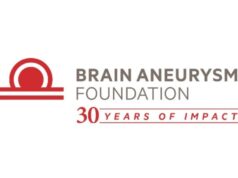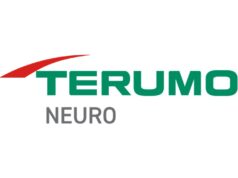
An analysis presented at this year’s European Society of Minimally Invasive Neurological Therapy (ESMINT) congress (4–6 September, Marseille, France) has indicated that flow diverters are “particularly effective” in the treatment of unruptured, distal anterior cerebral artery (ACA) aneurysms, while also highlighting the potential risk of ischaemic complications associated with this approach.
The analysis in question was delivered by Luca Scarcia (Henri Mondor Hospital, Créteil, France) on behalf of investigators for CRETA—a retrospective and prospective registry evaluating the clinical and radiological outcomes of endovascular treatment for distal ACA aneurysms that has enrolled 512 patients from 39 hospitals across 14 countries to date, and was developed alongside co-principal investigators Andrea Alexandre (Gemelli Hospital, Rome, Italy) and Adam Dmytriw (Massachusetts General Hospital, Boston, USA).
“Distal aneurysms—especially distal ACA aneurysms—are very poorly represented in [current] series of flow diverters,” the speaker initially noted, highlighting the backdrop to the present study.
Scarcia and colleagues’ analysis of CRETA included adult patients with unruptured ACA aneurysms located beyond the anterior communicating artery who underwent flow-diverter treatment from January 2018–December 2022. Their primary endpoint was complete occlusion of the target aneurysm at final follow-up, as per classification on the O’Kelly-Marotta (OKM) grading scale. Key secondary endpoints included the rate of adequate occlusion on OKM as well as the incidence and types of complications, radiological outcomes of covered branches, mortality, and modified Rankin scale (mRS) scores.
In total, 168 patients with 168 unruptured, distal ACA aneurysms treated with a flow diverter (74.4% female; median age, 61 years) were available for analysis. The vast majority of these cases were saccular (91.7%) as opposed to fusiform (8.3%) aneurysms, and the median parent vessel diameter across the cohort was 1.9mm. Regarding treatment results, Scarcia noted that a single flow diverter was implanted in 162 cases (96.4%), with the most frequently used devices being the Silk Vista Baby (Balt; 47%) and the Pipeline Shield (Medtronic; 26.1%). In addition, adjunctive coiling was performed in 11 aneurysms (6.5%) while only one patient included in the analysis received single antiplatelet therapy (SAPT).
Arriving at the crux of the analysis, Scarcia reported that complete occlusion (OKM D) at final radiological follow-up—which took place at a median timepoint of 16.5 months—was seen in 118 cases (70.2%), and adequate occlusion (OKM C–D) was observed in 138 cases (82.1%). Immediate occlusion rates were as follows: 8.9% OKM D; 10.7% OKM C; and 80.4% OKM A–B. The analysis also saw just two patients undergo retreatment (1.2%), with both cases involving adjunctive flow-diverter treatment.
Scarcia then relayed the analysis’ clinical outcomes, noting that 18 periprocedural thromboembolic complications occurred (10.7%), with 16 of these ultimately resulting in the patient being asymptomatic at the final clinical follow-up. There were also seven cases of haemorrhagic complications (4.2%)—of which five were intraparenchymal haemorrhages, and one resulted in an mRS shift of 4. Covered side-branch occlusion occurred in 10.1% of cases. The speaker went on to highlight a “very, very low” mortality rate of 0.6%, with the one and only death seen in the analysis ultimately adjudged to have been unrelated to the flow-diversion procedure. Overall, 85.7% of patients had an mRS score of 0 at final follow-up, Scarcia added.
“The high rate of occlusion suggests that flow diverters are particularly effective in treating aneurysms in this location, probably due to their ability to reconstruct the parent artery and promote endothelialisation over the aneurysm neck, as suggested by other studies,” he also stated, discussing the results of the present analysis.
Scarcia further noted that traditional coiling “often struggles” with aneurysms that are located in challenging anatomical regions like the distal ACA.
“Despite good efficacy, the use of flow diversion in distal ACA aneurysms in our series was associated with a non-negligible rate of complications [10.7%], with thromboembolic events being the most frequent—although most were asymptomatic,” he continued. “These findings are similar to those reported in a recent meta-analysis, which found a complication rate of 12.5% for distal ACA aneurysms treated with flow diversion. The neurological morbidity rate observed in our study [2.8%] was also comparable to other studies.”
Scarcia concluded by alluding to potential limitations of the analysis: its retrospective design; the fact there was no standardisation regarding antithrombotic therapies among participating centres; and the lack of centralised core lab imaging analyses or independent clinical outcome assessments. However, he also pointed to the analysis’ multicentre nature, large number of cases and relatively long follow-up periods as being among its strengths—before reiterating that, overall, this study underscores the efficacy of flow diverters in treating unruptured, distal ACA aneurysms while also drawing attention to potential associated risks of ischaemic complications.









